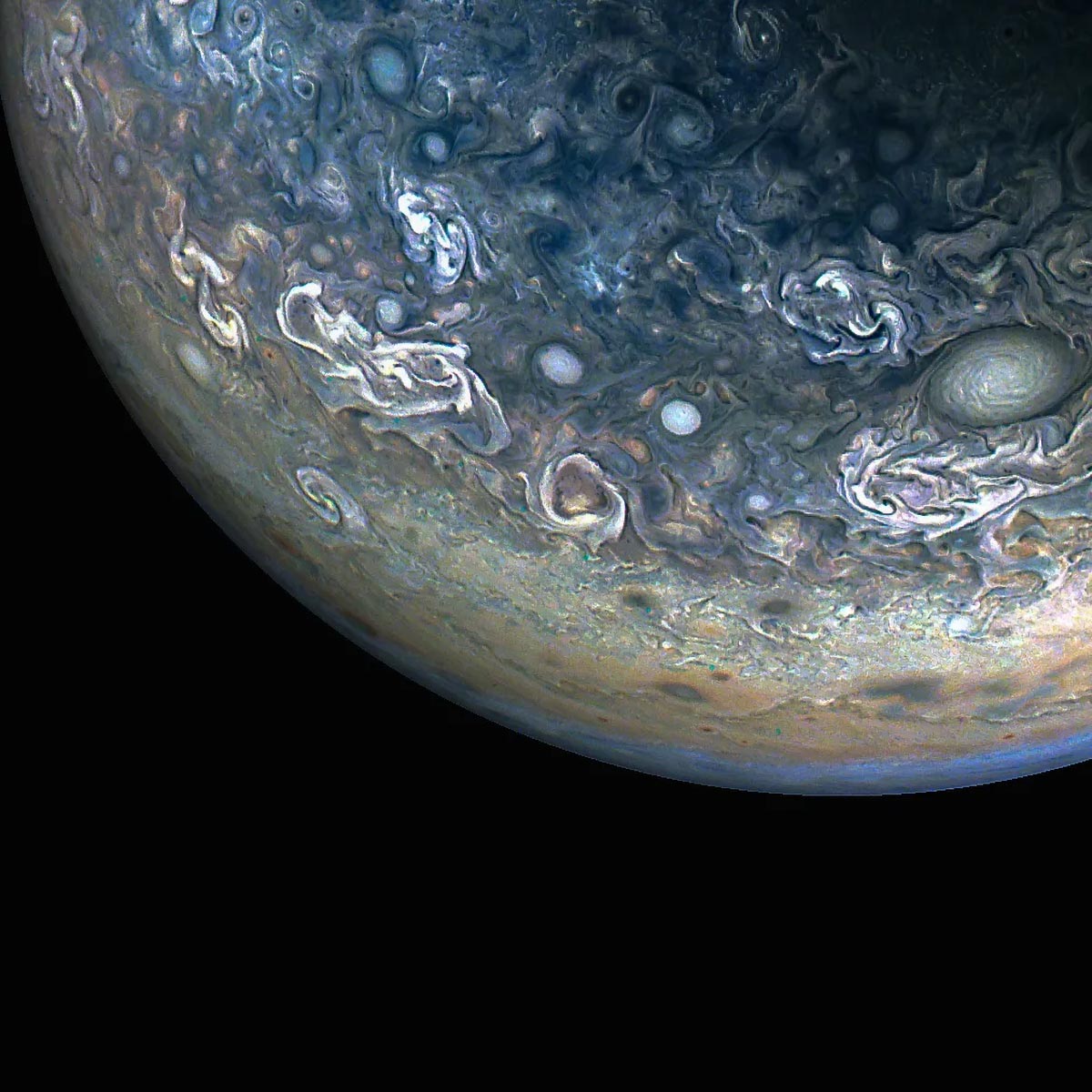
NASA's Juno spacecraft obtained a detailed image of Jupiter's northern hemisphere during its 61st flyby on May 12, 2024. The image reveals chaotic clouds and cyclonic storms in a region known as a folded filamentary region. This area is characterized by the break-down of zonal jets that create Jupiter's familiar banded patterns, leading to turbulent cloud structures and rapidly evolving storms.
The Juno spacecraft was about 18,000 miles above Jupiter's cloud tops at the time of the flyby. Citizen scientist Gary Eason processed the raw data from JunoCam to enhance color and clarity, resulting in this stunning visual representation of Jupiter's dynamic atmosphere.
Findings from Juno have provided unprecedented views into Jupiter's atmosphere, revealing intricate structures in its storms, bands, and auroras. The mission aims to better understand the composition, gravity field, magnetic field, and polar magnetosphere of Jupiter while also looking for clues about how the planet formed.
Juno is part of NASA's New Frontiers program and entered Jupiter's orbit on July 4, 2016. It uses a suite of scientific instruments to conduct its investigations, including a microwave radiometer to peer beneath the dense cloud cover and cameras and sensors to map the planet's magnetic and gravitational fields.
The findings from Juno have provided valuable insights into Jupiter's atmosphere, revealing intricate structures in its storms, bands, and auroras. The mission was initially set to conclude in 2018 but has been extended several times due to the wealth of data it continues to gather around Jupiter.



